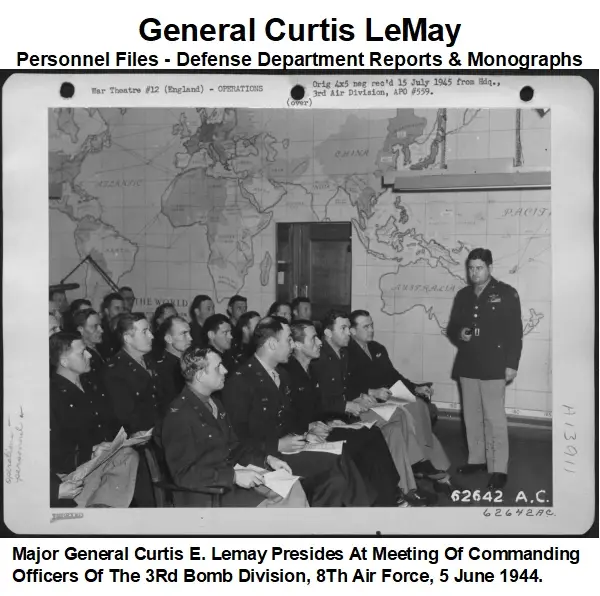
Gen. Curtis LeMay: Personnel Files & DOD Reports
$19.50
Category: War Files
Tags: Curtis LeMay, world war 2, World War II
Description
Curtis LeMay: Architect of Air Power and Nuclear Strategy
- July 1923 – August 1952: Curtis LeMay’s efficiency/fitness reports cover this period, indicating his early career progression.
- June 1927 – February 1980: LeMay’s medical records begin, extending well into his post-military life.
- December 1927 – October 1990: LeMay’s official military personnel file records begin, covering almost his entire adult life.
- September 28, 1928 – October 12, 1929: Records from LeMay’s Field File/Jacket or Record Book are maintained.
- September 1930 – January 1965: LeMay begins to receive awards, decorations, and commendations.
- October 1942 – September 1943: Curtis LeMay commands the 305th Operations Group.
- September 1943 – August 1944: LeMay commands the 3rd Air Division in the European theater of World War II, where he works to change bombing tactics for greater effectiveness.
- August 1944: LeMay is transferred to the China Burma India Theater.
- Late 1944 – August 1945: LeMay is placed in command of strategic bombing operations against Japan.
- March 9-10, 1945: LeMay directs “Operation Meetinghouse,” the firebombing of Tokyo, which becomes the single most destructive bombing raid of the war.
- Early 1945 – August 1945: LeMay commands B-29 Superfortress combat operations against Japan, including massive incendiary attacks on 67 Japanese cities.
- Early 1945 – August 1945: LeMay implements Operation Starvation, a crippling minelaying campaign in Japan’s internal waterways.
- August 1945: LeMay’s command covers the 509 Composite Group, which executes the atomic bombings of Hiroshima and Nagasaki.
Cold War Era & Post-War Leadership (1945 – 1965)
- 1945 – 1955: Leading U.S. Air Force officers grapple with and accept the ethical implications of nuclear weapons, believing it to be a path of higher morality.
- Post-WWII: LeMay builds the Strategic Air Command (SAC), transforming it into a resolute and capable organization for nuclear deterrence. He also changes maintenance procedures within SAC and addresses quality of life issues for personnel.
- 1953 – 1973: During this period, rated or flying officers (mainly pilots and some navigators) dominate Air Force leadership positions, as highlighted in “Rise of the Fighter Generals.”
- 1961 – 1965: Curtis LeMay serves as the Air Force Chief of Staff.
- May 1965: LeMay’s general correspondence records conclude.
- 1965: Curtis LeMay retires from the Air Force.
Post-Military Life & Legacy (1968 – 1990)
- 1968: LeMay briefly returns to public life as the vice-presidential candidate for the far-right American Independent party, running on a segregationist platform with George C. Wallace. The ticket receives 13.5% of the popular vote.
- 1984: Major Ian E. Robinson produces “Curtis E. LeMay: A Great Warrior,” a student report reviewing LeMay’s strategy.
- 1988: The Office of Air Force History conducts “Strategic Air Warfare: An Interview with Generals Curtis E. LeMay, Leon W. Johnson, David A. Burchinal, and Jack J. Catton,” discussing the development of strategic air employment.
- 1990: Curtis Emerson LeMay passes away.
- 1998: United States Air Force Lieutenant Bret J. Cillessen writes “Embracing the Bomb: Ethics, Morality, and Nuclear Deterrence in the U.S. Air Force, 1945-1955.”
- 1998: A study titled “Rise of the Fighter Generals: The Problem of Air Force Leadership 1945–1982” is produced, analyzing air leadership.
- 2010: Major Paul K Carlton, III, writes “General Curtis E. LeMay on Leadership and Command,” a thesis examining LeMay’s leadership.
Cast of Characters
- General Curtis Emerson LeMay (1906-1990): A highly influential General in the U.S. Air Force. He directed the bombing of Japan in World War II, including the firebombing of Tokyo (“Operation Meetinghouse”) and commanded the 509 Composite Group for the atomic bombings of Hiroshima and Nagasaki. After the war, he built and commanded the Strategic Air Command (SAC) during the Cold War, transforming it into a key component of nuclear deterrence. He served as Air Force Chief of Staff from 1961 to 1965 and retired in 1965. In 1968, he was the vice-presidential candidate for the American Independent party with George C. Wallace. Widely regarded as the best operational-level commander the U.S. Air Force has produced.
- George C. Wallace: The presidential candidate for the far-right American Independent party in 1968, running on a segregationist platform. Curtis LeMay was his vice-presidential running mate.
- Major Paul K Carlton, III: Author of the 2010 thesis “General Curtis E. LeMay on Leadership and Command,” which analyzes key events in LeMay’s life to glean insights into leadership and command.
- United States Air Force Lieutenant Bret J. Cillessen: Author of the 1998 thesis “Embracing the Bomb: Ethics, Morality, and Nuclear Deterrence in the U.S. Air Force, 1945-1955,” which examines how Air Force officers viewed nuclear weapons ethically.
- General Leon W. Johnson: One of the air commanders interviewed in the 1988 “Strategic Air Warfare” discussion, sharing insights on the development of strategic air employment.
- General David A. Burchinal: One of the air commanders interviewed in the 1988 “Strategic Air Warfare” discussion, contributing to the historical record of strategic air employment.
- General Jack J. Catton: One of the air commanders interviewed in the 1988 “Strategic Air Warfare” discussion, providing perspectives on the evolution of strategic air warfare.
- Major Ian E. Robinson: Author of the 1984 student report “Curtis E. LeMay: A Great Warrior,” which analyzes LeMay’s strategy in Europe and the Pacific.
Related products
-
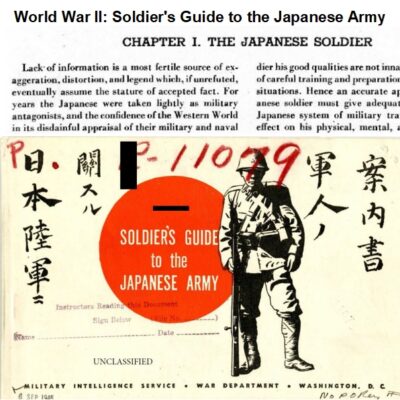

World War II: A Soldier’s Handbook on the Japanese Army
$3.94 Add to Cart -
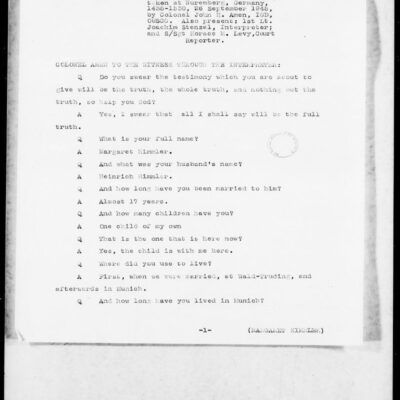
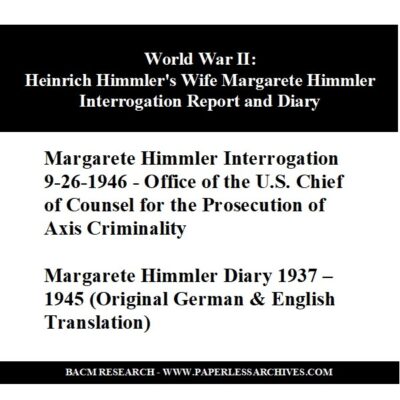
World War II: Interrogation Report and Diary of Margarete Himmler, Wife of Heinrich Himmler
$3.94 Add to Cart -
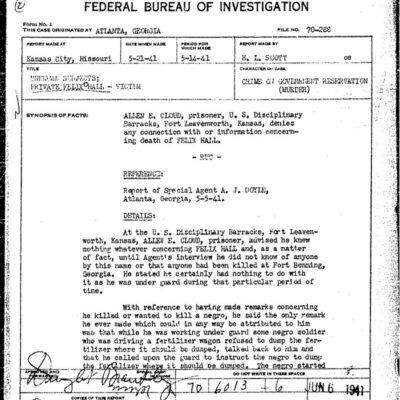
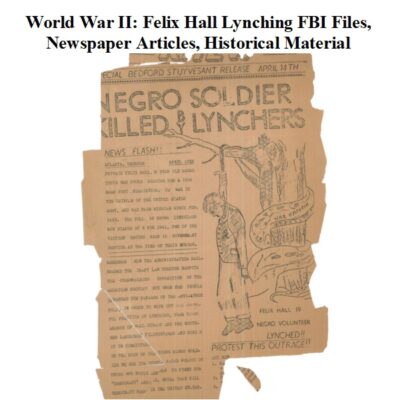
World War II: Felix Hall Lynching – FBI Files, Articles, Historical Records
$9.99 Add to Cart -

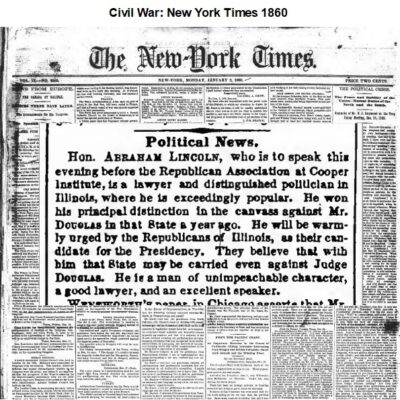
Civil War: New York Times 1860
$9.90 Add to Cart